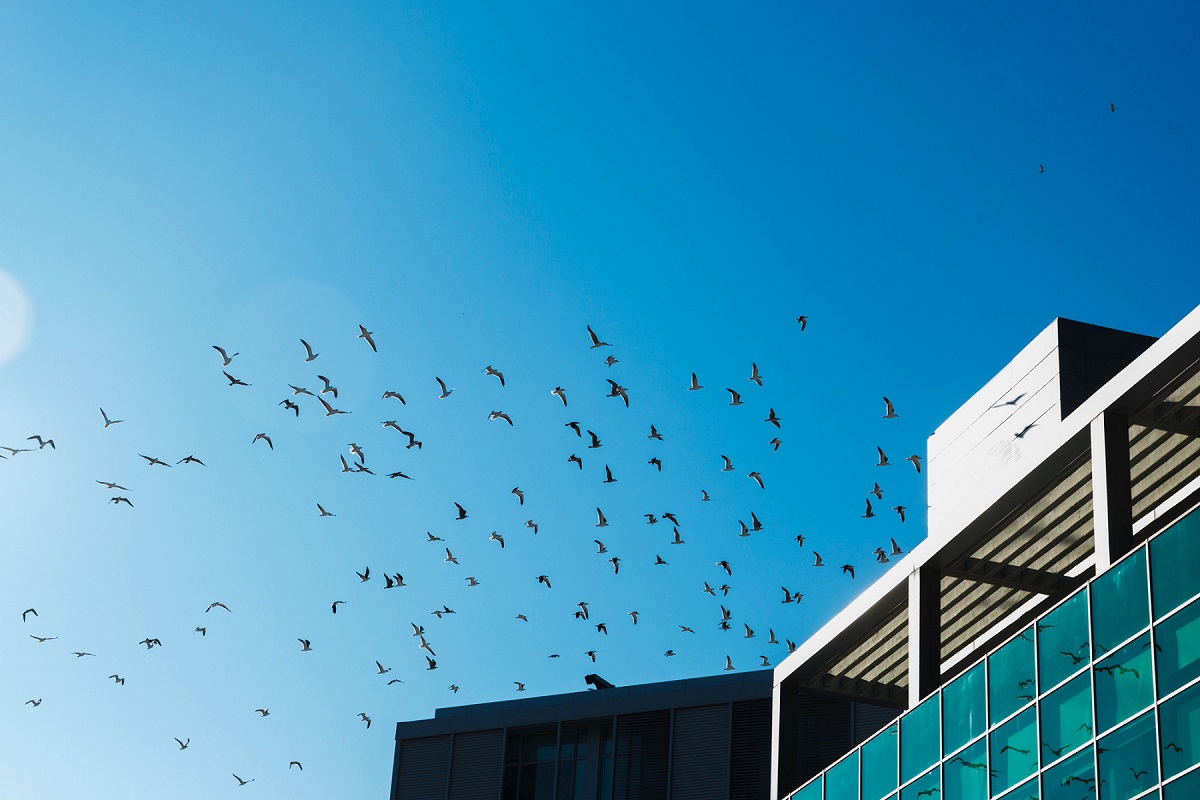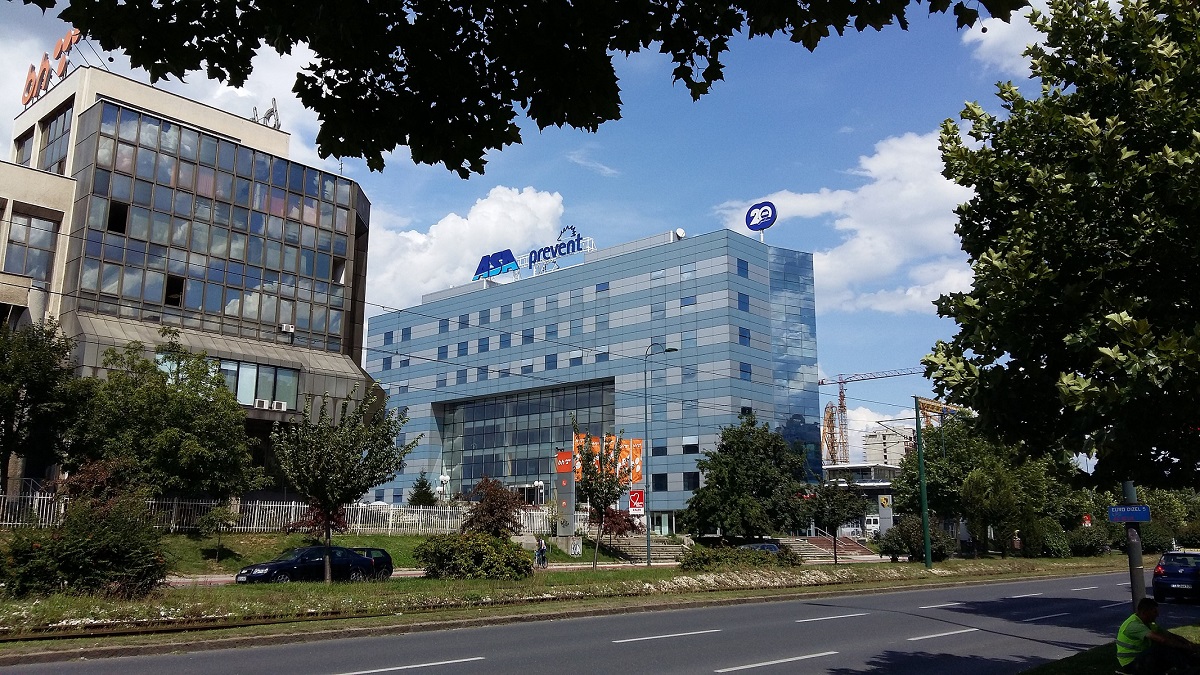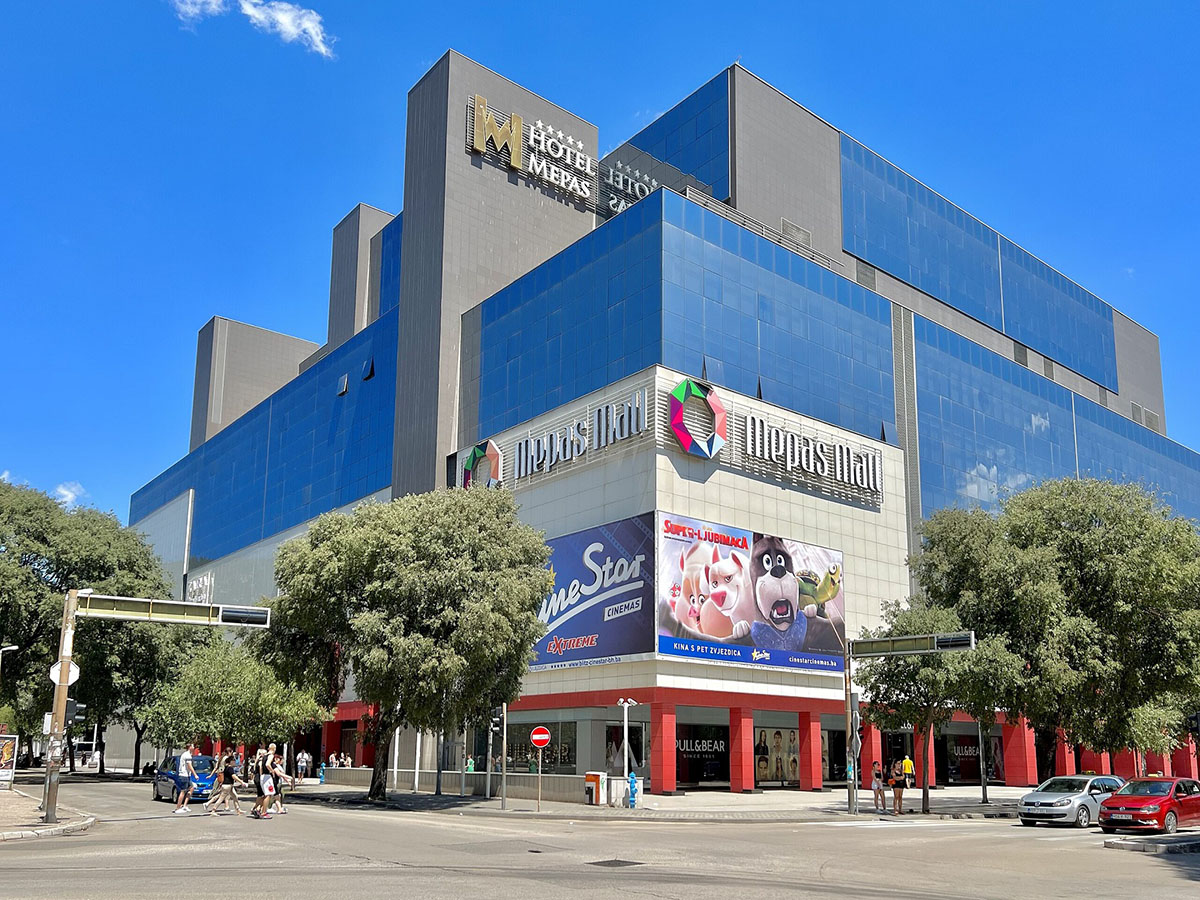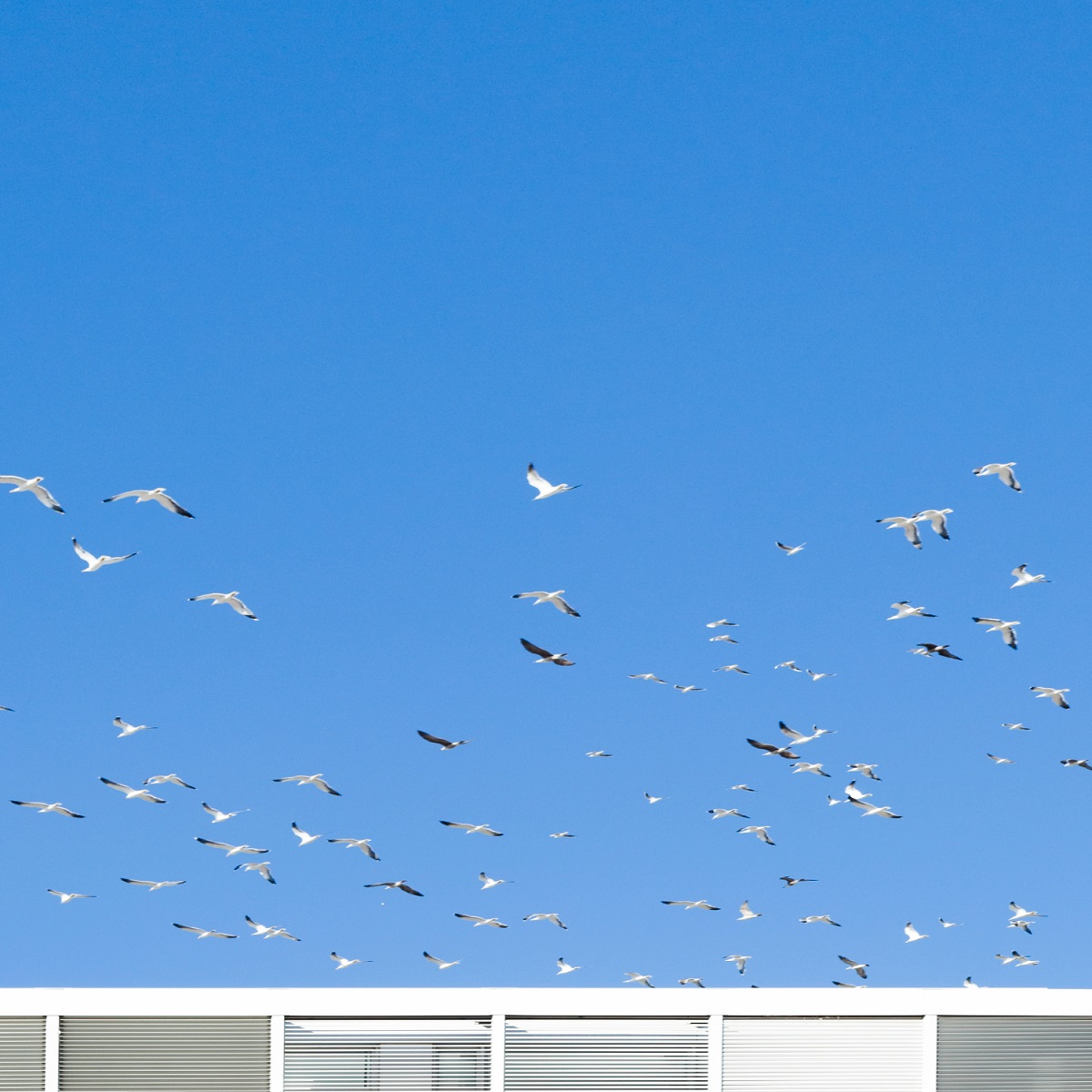Submitted by Emina Čamdžić
Reflecting Panels: A Critical Review on Ethics in Architecture
Bosnia and Herzegovina Architecture News - Oct 03, 2024 - 11:55 3353 views

This article tends to examine and understand the way in Bosnia and Herzegovina the reflecting, mirror-like large-dimensioned surfaces are designed and constructed, their impact on the world of birds, and the ethics of the relation towards nature that surrounds us, writes Emina Čamdžić, World Architecture Country Reporter and architect. Currently, threats to migratory birds include habitat loss due to human activity, pollution and climate change, according to the State of the World’s Migratory Species report1 (the World Wildlife Fund page).
In the expertise of architecture, the use of innovative materials has been a cornerstone. However, the large-dimensioned uniformed, sleek façade surfaces of high buildings and skyscrapers and angled constructions represent a hidden threat for the world of birds, while the dangerous impact of aluminum and steel panels on birds often goes unnoticed. While the shiny large-dimenioned surfaces exude modernity, sleekness and status, they pose as a threat to millions of birds each year, and more information about this can be found on this website.
Understanding the issue
In fact, aluminium and steel panels are a very popular choice for cladding of building façades due to their versatility, lightweight and reflective characteristics. These qualities that make such panels attractive to investors, architects, and contractors are the same ones that spell danger for the avian species. The reflective and polished surfaces of aluminum, steel, copper, and other metals, mostly combined with mirror-like glass surfaces of large dimensions, especially of tall buildings in urban environments, create an illusion of open space, leading unsuspecting birds to bump into buildings often at a very high speed. The reflection of façade panels from aluminum, steel, and copper gives a feeling of depth of the space, new nature, surroundings, and other birds. Birds do not have the same understanding of reflection as humans. It’s a fact that birds collide in their flight on polished uniformed large-dimensioned and reflective façades of high buildings, into the mirror-like reflection of shiny, hot panels thinking they are flying next to other birds and near the clouds.

Image shows example of large-dimensioned aluminium and glass surfaces. Image © 4045 on Freepik 2 via Freepik.com
"Migratory birds are part of our shared natural heritage and they depend on a network of sites along their migration routes," is mentioned regarding the complex threats to migratory species. For more information, you can read about this on the UNEP page. Further mentioned, there is also an ethical concern to address biodiversity and habitat loss, a responsibility to pass on to future generations a planet as rich in natural wonders as was inherited. This writing highlighted a clear call to action.
The report above on migratory species calls on increased actions to identify, protect, and better manage important sites for migratory species and to tackle light pollution.
"Nature is in crisis, threatened by biodiversity and habitat loss, global heating and toxic pollution," is stated in the above mentioned report.
In fact, the reflection from large-dimensioned volumes with aluminum panels can disorient birds. The sunlight reflecting off the facade panels on sunny days creates rays of light that mimic the sky, vegetation, and bird flocks. This confuses birds during their flight paths, as they think they are in an open sky or flying among surrounding trees.
However, despite attempts to create visually striking and often more affordable projects, it seems that many investors, architects, and contractors fail to realize that they are inadvertently contributing to the silent epidemic of bird collisions. Such exteriors are not only limited to the urban, town areas. These are often installed on modern houses, factories, and large business buildings or shopping centers, where large uniform surfaces and volumes display minimalism and contemporary building exteriors. Colors of these surfaces and volumes are typically limited to the hues of the metal, reflecting the space like a mirror.
Image shows example of large-dimensioned surfaces with façade panels and glass façade. Image © Diego Delso 3 via Wikimedia Commons
As mentioned earlier, migratory bird species are at a higher risk due to navigating through unfamiliar urban and rural landscapes filled with reflective surfaces such as aluminum, steel panels, and mirrored glass. This not only disrupts the ecological balance but raises ethical and conservation concerns and questions not only by environmentalists and bird enthusiasts.

Image shows example of large-dimensioned surfaces with façade panels and glass panels in Sarajevo. Image © Combi20004 via Wikimedia Commons

Image shows example of a building in Mostar with large-dimensioned reflective surfaces. Image © Sharon Hahn Darlin5 via Wikimedia Commons
Moving toward solutions

Image shows birds flock flying. Image © Freepik6 via Freepik.com
Architects should mitigate the adverse effects of large surfaces and volumes by using aluminum, steel panels, and bird-safe glass in their projects to protect bird populations.
Through thoughtful architecture strategies and conscious material choices, architects can minimize harmful effects on bird populations without compromising on the aesthetics of architectural projects.
Starting with these 10 steps and incorporating some of the bird-friendly architectural and construction principles:
- consider patterned panel surfaces
- integrating bird-safe glass by using rough panel surfaces instead of polished
- adding visual markers on existing reflective and other façade surfaces
- consider the broader implications of design choices such as different, non-reflective or non-polished panel surfaces
- create safer habitats for birds while maintaining architectural integrity
- reducing the percentage of reflective surfaces by manually wire brush roughen each panel
- foster harmonious coexistence between urban development and wildlife conservation
- raising awareness on the wildlife and nature issue by the SDG goals and indicators
- promoting research of the built environment that is avian species friendly
- implementing bird-conscious architecture project solutions.
By raising awareness, promoting research, and implementing bird-conscious architecture project solutions, architects can lead the way toward a more sustainable and bird-friendly built environment. Additionally, the protection of wildlife and biodiversity is mentioned in the Sustainable Development Goals and components of Agenda 2030. More information on this can be found on the website7.
The allure of the shiny, reflective aluminum and steel panels and glass panels in architectural projects must be balanced with a deep sense of responsibility towards wildlife conservation, protecting birds from the large-dimensioned reflective surfaces. Further, architects, experts, and investors must prioritize the well-being of all creatures that share urban environments, paving the way for a more conscious and compassionate approach to architectural innovations. We must envision a future where architecture coexists harmoniously with the natural world, enhancing wildlife with its beauty.The world where large-dimensioned surfaces of aluminum and steel polished panels and mirror-like glass panels don't cast a shadow on the lives of the feathered friends.
Top image in the article: Birds flock flying. Image by Freepik. Retrieved 30 August, 2024 from (https://www.freepik.com/free-photo/bird-flock-flying_4150968.htm#fromView=search&page=1&position=0&uuid=76ff5a9e-afca-407c-86f1-d4c1e844d70c) via Freepik (Free license). Copy-Paste into your browser.
1. The "State of the World’s Migratory Species” report at the World Wildlife Fund (WWF) page. Retrieved 16 September, 2024 from (https://wwf.panda.org/wwf_news/?10668966/Worlds-Migratory-Species-of-Animals-in-Decline-Global-Extinction-Risk-Increasing) Copy-Paste into your browser.
2. Image: Industrial park with factory building. Image by 4045 on Freepik. Retrieved 30 August, 2024 from (https://www.freepik.com/free-photo/industrial-park-factory-building-warehouse_1296994.htm#fromView=search&page=1&position=51&uuid=329a437e-767d-40a0-be96-fcbe2ba63ee7) via Freepik (Free license). Copy-Paste into your browser.
3. Image: Building in Germany with large-dimensioned reflective surfaces. Image by Diego Delso. Retrieved 30 August, 2024 from (https://commons.wikimedia.org/wiki/File:BMW_Welt,_M%C3%BAnich,_Alemania,_2013-02-11,_DD_14.JPG) via Wikimedia Commons (CC BY-SA 3.0). Copy-Paste into your browser.
4. Image: Buildings in Sarajevo with large-dimensioned reflective surfaces. Image by Combi2000. Retrieved 30 August, 2024 from (https://commons.wikimedia.org/wiki/File:Prevent_BH_headquarters_1.jpg) via Wikimedia Commons (CC BY 4.0). Copy-Paste into your browser.
5. Image: Building in Mostar with large-dimensioned reflective surfaces. Image by Sharon Hahn Darlin. Retrieved 30 August, 2024 from (https://commons.wikimedia.org/wiki/File:Mostar,_Bosnia_and_Herzegovina_2022-08_-_Mepas_Mall.jpg) via Wikimedia Commons (CC BY 2.0). Copy-Paste into your browser.
6. Image: Birds flock flying. Image by Freepik. Retrieved 30 August, 2024 from (https://www.freepik.com/free-photo/bird-flock-flying_4152461.htm#fromView=search&page=1&position=22&uuid=eb10d049-53fd-4528-a2f7-56ce5971c7d2) via Freepik (Free license). Copy-Paste into your browser.
7. The Sustainable Development Goals, Agenda 2030. Retrieved 30 September, 2024 from (https://sdgs.un.org/topics/biodiversity-and-ecosystems). Copy-Paste into your browser.
